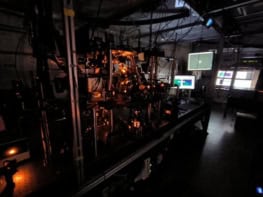Physicists in Italy have developed a new microwave-based technique for analysing fresco paintings without damaging them – something that was impossible until now. Roberto Olmi and colleagues at the National Research Council in Florence have already used their technique to assess the moisture and salt content of frescoes in several churches in Florence. The new tool could help restorers preserve these works of art, which date from the Renaissance (Meas. Sci. Technol. 17 2281).

Frescoes are works of art that were directly painted onto walls during the Renaissance, which ran from the late 1300s to the start of the 17th century. Found in churches and chapels across Italy, these paintings are continually being attacked by moisture from the atmosphere and salts in the plaster of the walls. Knowing the moisture and salt content is important for restorers so that they can decide on the best way of saving a painting. Until now, however, this was only possible by drilling holes through the painting to obtain a sample of the plaster.
Now, Olmi and co-workers claim to have found a solution to this problem. Their technique involves scanning the surface of the painting with a portable sensor device that fires microwaves at the wall. If water and salt molecules are present in the plaster, they absorb the microwaves and send a signal to a computer that then determines how much moisture or salt is present. This is calculated by measuring the material’s dielectric constant, (a material’s ability to store electrostatic energy), which changes depending on the content of the plaster. The tool is called SUSI (sensore di umidita e salinita integrato), — that is, an “integrated sensor for humidity and salinity”.
The scientists have tested their technique on the Paradise Wall frescoes in the Santa Maria Maddalena de Pazzi chapel and the frescoes in the cloisters of St Antonino at the Convent of St Mark, both in Florence. “We have also started to refine the device for use on other types of art,” says Olmi. “For example, we have used SUSI to measure the humidity and salt content of the famous Robbiane ceramics in the sanctuary of La Verna in Arezzo. However, paintings and old parchment are too thin for the device at the moment and we will need to refine it before we can use it on these kinds of works.”
The researchers have also patented their measuring device.



